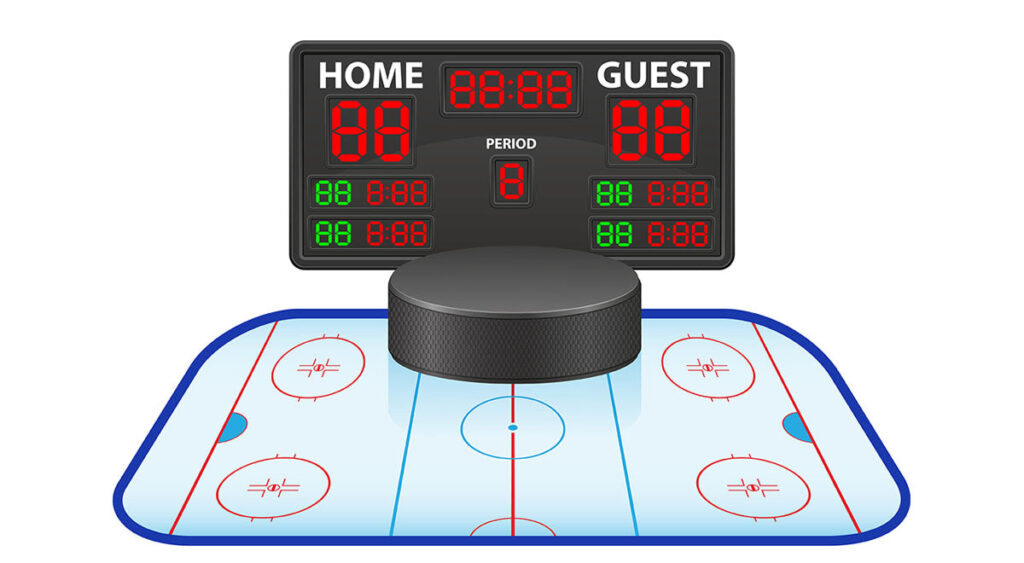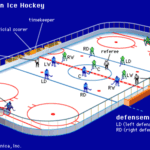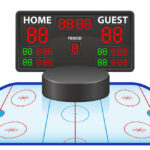NHL games typically last around 2.5 hours, including intermissions. Regulation play is 60 minutes, divided into three 20-minute periods.
NHL games captivate fans with fast-paced action and intense competition. Each game consists of three periods, each lasting 20 minutes. In addition to the 60 minutes of regulation play, there are two 17-minute intermissions, making the total duration around 2.
5 hours. Overtime and shootouts can extend this time. Understanding the structure and flow of an NHL game enhances the viewing experience. Fans can plan their schedules accordingly and enjoy every thrilling moment on the ice. Whether you’re a seasoned fan or new to hockey, knowing the game duration is essential for a great experience.
Game Duration
The duration of an NHL game is important to fans. Each game consists of several periods and possible extensions. Understanding this helps fans plan their viewing experience.
Regular Game Time
A regular NHL game consists of three periods. Each period lasts 20 minutes. The game clock stops for stoppages in play, such as goals or penalties.
There are also two intermissions. Each intermission lasts 15 minutes. This gives players time to rest and strategize.
| Period | Duration |
|---|---|
| First Period | 20 Minutes |
| Second Period | 20 Minutes |
| Third Period | 20 Minutes |
| Intermissions | 2 x 15 Minutes |
Overtime Periods
If the game is tied after three periods, it goes to overtime. The overtime period in regular-season games is 5 minutes long.
During overtime, teams play with three skaters each. If no team scores in overtime, the game goes to a shootout. Each team takes three shots. The team with more goals wins.
Playoff games have different rules. If tied, playoff games go to 20-minute overtime periods. These periods continue until one team scores.
Here is a summary:
- Regular-season overtime: 5 minutes
- Playoff overtime: 20 minutes
- Shootouts: 3 shots per team
Periods And Intermissions
Understanding the structure of an NHL game is essential. The game is divided into periods and intermissions. This structure keeps the action flowing and gives players time to rest.
Length Of Each Period
An NHL game is divided into three periods. Each period lasts 20 minutes. This means the total playtime is 60 minutes. During these periods, players skate hard and compete fiercely.
Intermission Duration
Between the periods, there are two intermissions. Each intermission lasts 15-18 minutes. During this time, the ice is resurfaced. Players also get a chance to rest and strategize.
| Segment | Duration |
|---|---|
| Period 1 | 20 minutes |
| Intermission 1 | 15-18 minutes |
| Period 2 | 20 minutes |
| Intermission 2 | 15-18 minutes |
| Period 3 | 20 minutes |
This structure ensures the game has a rhythm. The players stay fresh and the audience stays engaged.
Stoppages In Play
Understanding the length of an NHL game involves knowing the stoppages in play. These pauses impact the game’s total duration. The main types of stoppages include commercial breaks and injury timeouts.
Commercial Breaks
Commercial breaks are essential to NHL games. They happen at set times. Each period has three commercial breaks. These breaks occur at the first whistle after the 6, 10, and 14-minute marks.
Commercial breaks last about 2 minutes. This ensures advertisers get time to show their ads. These breaks also allow players to rest and strategize.
| Period | Commercial Breaks | Duration |
|---|---|---|
| 1st Period | 3 | 6 minutes |
| 2nd Period | 3 | 6 minutes |
| 3rd Period | 3 | 6 minutes |
Injury Timeouts
Injuries are part of hockey. Injury timeouts happen when players get hurt. These stoppages ensure player safety. They allow medical staff to assess and treat the injured player.
Injury timeouts vary in length. They depend on the severity of the injury. Some injuries may need a few minutes. Serious injuries can take longer.
- Minor Injuries: Usually 2-3 minutes
- Major Injuries: May take 5-10 minutes or more
Injury timeouts also provide players a chance to rest and regroup. The game resumes once the injured player is off the ice.

Credit: www.gaimday.com
Overtime And Shootouts
NHL games can be thrilling, especially when they go into overtime or end with a shootout. Understanding these aspects can enhance your viewing experience. Let’s dive into the specifics of overtime and shootouts in NHL games.
Overtime Rules
Overtime in the NHL is exciting. During the regular season, if the game is tied after three periods, it goes into overtime. The overtime period lasts for five minutes. Teams play 3-on-3 hockey, which creates many scoring chances. If no one scores during this time, the game moves to a shootout.
During the playoffs, overtime is different. There is no shootout. Instead, teams play 20-minute periods of sudden-death hockey until someone scores. This can make for very long and intense games.
Shootout Format
If the game is still tied after overtime in the regular season, it moves to a shootout. This is a fun and tense way to end the game. Each team selects three players to take penalty shots. The team with the most goals after these shots wins.
If the score remains tied after the initial three shots, it goes to sudden-death rounds. Each team takes one shot at a time until one team scores and the other does not. This format keeps fans on the edge of their seats.
Here’s a quick summary in table form:
| Situation | Overtime Format | Shootout |
|---|---|---|
| Regular Season | 5 minutes, 3-on-3 | Yes, if tied after overtime |
| Playoffs | 20 minutes, sudden-death | No |
Understanding these rules can make watching NHL games more enjoyable. The excitement in overtime and shootouts adds to the thrill of the sport.
Playoff Game Length
Playoff games in the NHL are famous for their intensity and excitement. These games often last longer than regular-season games. The stakes are higher, and the play is tougher. Fans love the suspense and the possibility of extended play.
Extended Overtime
During the playoffs, overtime rules change. In the regular season, overtime lasts only five minutes. But in the playoffs, overtime periods are 20 minutes each. These periods continue until a team scores a goal. This can make the games much longer.
For example, a game might go into double or triple overtime. This means the game continues for multiple 20-minute periods. The longest playoff game in NHL history lasted over 176 minutes of play. That’s nearly three full games in one night!
Impact On Overall Game Time
Extended overtime affects the overall game time significantly. A standard NHL game lasts about two and a half hours. But with extended overtime, games can last much longer. Some playoff games can stretch to four or even five hours.
This extended time can tire out players and affect their performance in future games. It also keeps fans on the edge of their seats for longer periods. The excitement of sudden-death overtime adds to the thrill of the playoffs.
Below is a table showing the average game lengths:
| Game Type | Average Length |
|---|---|
| Regular Season | 2.5 hours |
| Playoff (Standard Time) | 2.5 hours |
| Playoff (Extended Overtime) | 4-5 hours |
Fans and players must prepare for these extended games. They can be both exhausting and exhilarating. The thrill of sudden-death overtime is unmatched in any other sport. This makes NHL playoff games a unique and exciting experience.

Credit: www.gaimday.com
Factors Affecting Game Length
Understanding the factors affecting the length of NHL games can be important for fans. These factors include penalties, video reviews, and more. Each element can impact the game duration in unique ways. Let’s explore some of these factors in detail.
Penalties
Penalties can significantly influence the length of an NHL game. When a player commits a foul, the game stops. The referee then decides the penalty, which leads to a break in play. These stops can add several minutes to the game.
Common penalties include:
- High-sticking
- Tripping
- Slashing
Each penalty results in a player sitting in the penalty box. This disrupts the flow of the game. Teams must adjust their strategies during these periods. Such adjustments can elongate the game.
Video Reviews
Video reviews are another factor that can extend the duration of NHL games. Referees use video reviews to ensure accurate calls on the ice. This process involves stopping the game and reviewing footage.
Common scenarios for video reviews include:
- Goal confirmations
- Offside challenges
- Goaltender interference
While video reviews enhance fairness, they also add time. Each review can take several minutes. Multiple reviews in a game can significantly increase the overall length. Fans must stay patient during these reviews, knowing they aim for fairness.

Credit: www.reddit.com
Conclusion
Understanding the duration of NHL games helps fans plan their viewing experience. Typical games last about 2. 5 hours. This includes three 20-minute periods, intermissions, and stoppages. Knowing this can enhance your enjoyment and scheduling. Stay tuned for more insights into the exciting world of hockey!


